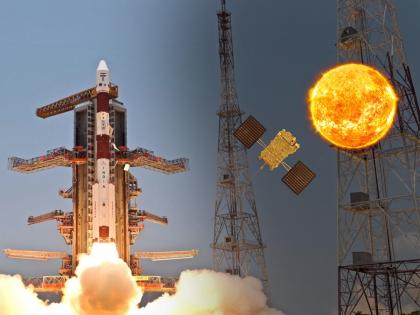Aditya L1 Update: ISRO’s First Sun Mission Successfully Injected Into Final Orbit; PM Modi Congratulates Indian Scientists
By Lokmat English Desk | Published: January 6, 2024 04:28 PM2024-01-06T16:28:04+5:302024-01-06T16:31:35+5:30
The Indian Space Research Organisation (ISRO) achieved its first success of 2024 by successfully entering the designated orbit on ...

Aditya L1 Update: ISRO’s First Sun Mission Successfully Injected Into Final Orbit; PM Modi Congratulates Indian Scientists
The Indian Space Research Organisation (ISRO) achieved its first success of 2024 by successfully entering the designated orbit on Saturday. The culmination of this ambitious journey, which began over four months ago from ISRO's Sriharikota launchpad, marks a noteworthy achievement for India in the field of space exploration. Prime Minister Narendra Modi shared this information, extending congratulations to the ISRO team for their successful mission.
Prime Minister Modi expressed in a tweet, "India achieves another milestone as the nation's first solar observatory, Aditya-L1, successfully reaches its destination. This accomplishment stands as a testament to the unwavering dedication of our scientists in undertaking one of the most complex and intricate space missions. I join the nation in applauding this extraordinary feat. Our commitment to exploring new frontiers of science for the benefit of humanity remains steadfast."
India creates yet another landmark. India’s first solar observatory Aditya-L1 reaches it destination. It is a testament to the relentless dedication of our scientists in realising among the most complex and intricate space missions. I join the nation in applauding this…
— Narendra Modi (@narendramodi) January 6, 2024
Background and Moto of Aditya L1
As per ISRO officials, the spacecraft is set to be positioned in a halo orbit around Lagrange point 1 (L1) within the Sun-Earth system, situated approximately 1.5 million km from Earth. L1 is merely one percent of the total distance between Earth and the Sun.
By being in a halo orbit around the L1 point, the satellite gains a significant advantage of maintaining continuous visibility of the Sun without any interruptions or eclipses. This unique orbital position offers a distinct advantage in observing solar activities and promptly monitoring their impact on space weather in real-time. The critical maneuver, scheduled for around 4 pm on Saturday, will secure Aditya-L1 in a halo orbit around L1. An ISRO official highlighted that without this maneuver, there is a possibility that the spacecraft might continue its journey, potentially towards the Sun.The Polar Satellite Launch Vehicle (PSLV-C57) initiated the launch of the Aditya-L1 spacecraft from the second launch pad of the Satish Dhawan Space Centre (SDSC), Sriharikota, on September 2 last year.
Following a flight duration of 63 minutes and 20 seconds, the spacecraft was successfully injected into an elliptical orbit of 235×19500 km around the Earth. Subsequent maneuvers led it towards Sun-Earth Lagrange Point 1 (L1), escaping the Earth’s sphere of influence. The spacecraft is equipped with seven payloads designed to observe the photosphere, chromosphere, and the outermost layers of the Sun (the corona) using electromagnetic, particle, and magnetic field detectors. Positioned at the special vantage point L1, four payloads directly observe the Sun, while the remaining three conduct in-situ studies of particles and fields at Lagrange point L1, contributing valuable scientific insights into the propagatory effect of solar dynamics in the interplanetary medium, according to the space agency.
Open in app